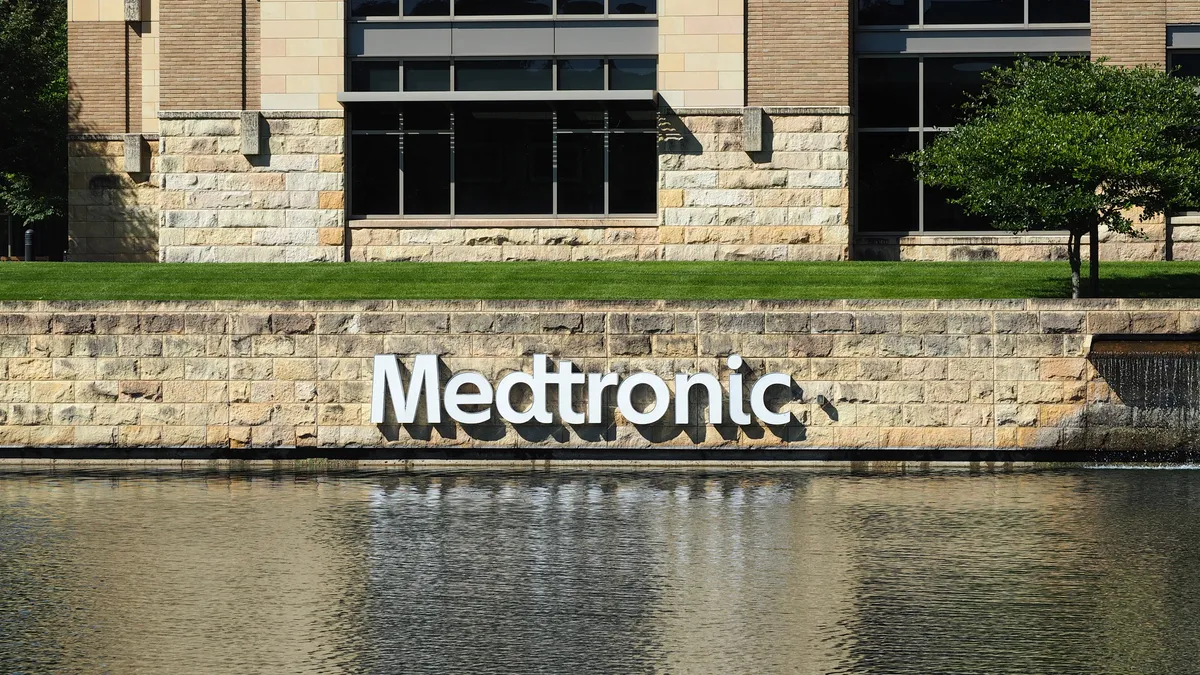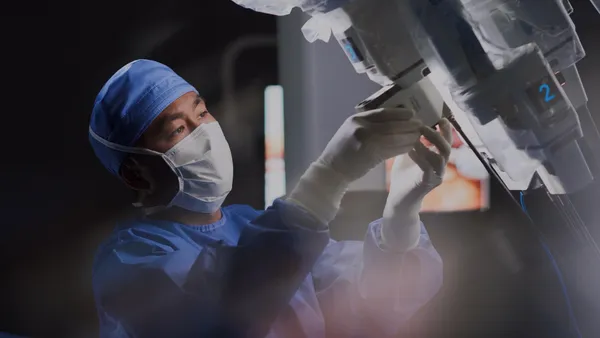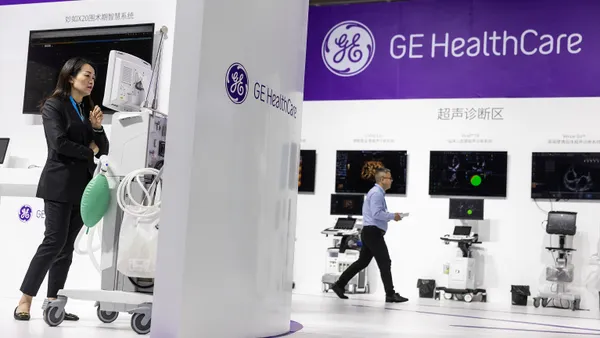During Medtronic CEO Omar Ishrak's final turn at the J.P. Morgan Healthcare Conference Monday, he highlighted the forthcoming Micra AV pacemaker as one of the most important products developed during his nine-year tenure leading Medtronic.
Micra AV is smaller in size than traditional pacemakers, but targets about 55% of the pacemaker recipient population, compared to a previous version's 15%. Medtronic expects FDA to greenlight the product by the end of the fiscal year. (For Medtronic, that's typically in late April.)
Asked for a regret, Ishrak said he would have focused less on short-term Wall Street deliverables, which took away from attention to free cash flow.
"We got too hung up on the adjusted EPS numbers," he said, referring to earnings per share. "I think that would have made a big difference to the credibility of the company, because we lost credibility."
The first half of 2020, during which Ishrak will hand the reins to former Restorative Therapies Group head Geoff Martha, will see a number of key clinical trial readouts from Medtronic.
They include data on use of its TAVR technology in low-risk patients with bicuspid aortic valves (about 60% of the low-risk population, Medtronic said) at the American College of Cardiology meeting in March, and on its advanced hybrid closed loop system at the American Diabetes Association conference in June. Medtronic is also making moves toward the mitral regurgitation treatment market, currently enrolling a U.S. pivotal trial for transfemoral delivery of its mitral replacement device.
Medtronic first revealed its soft tissue surgical robot, dubbed Hugo, last fall. Ishrak said Monday the Minimally Invasive Therapies Group which houses the robot is currently growing at a rate of about 5%, and expects the robot will add 2% to 2.5% to that figure within the next two to three years.
"This is only the launching platform for us … I know that there are big competitors out there," Ishrak said. "This market is already created, but it is not even close to what it can be."
The company reaffirmed it plans to submit Hugo for CE marking and FDA authorization during the first quarter of next fiscal year, with release timelines contingent upon those approvals.
However, the first-in-human trial may be delayed from the second half of this fiscal year to the first quarter of FY2021 to deal with a minor software adjustment.
Medtronic under Martha
Martha is set to become CEO April 27. He noted Monday that executing on Medtronic's existing pipeline is the top priority.
But he also said that since the Covidien acquisition doubled the number of Medtronic employees five years ago, there are "some opportunities to simplify the company," saying that the management team agrees "certain pockets of the company probably have a little bit too much bureaucracy."
Without taking focus away from market development, Martha said, he intends to focus on making Medtronic more competitive in its existing markets.
The company said it's focused on putting free cash flow toward M&A before its dividend and then potential share buybacks.
"There are more engineers outside of Medtronic than inside Medtronic," Ishrak said, highlighting its deal last week for spinal cord stimulation startup Stimgenics and last year's takeout of implant maker Titan Spine. "These types of tuck-in M&As will happen at increasing frequency as we start to use the free cash flow that we've generated."
Martha said Medtronic will look to improve "a healthy cadence of tuck-in M&A" in the form of deals within one of Medtronic's group, an adjacency to Medtronic or an underpenetrated disease segment where a series of opportunities exist.
While the U.S. and Israel are the sources of most of Medtronic's deals, Martha said "there's real innovation going on in China," where Medtronic has a dedicated fund and M&A team.
China is also one of Medtronic's highest contributing emerging markets, which together account for 16% of the company's sales. Direct distribution efforts are slated to continue, Medtronic said.
Ishrak said Medtronic is increasingly doing local manufacturing and engineering "because there'll be more emerging market physicians at some point than developed market physicians."
"We need to be local and work with them to develop products that they're comfortable with and they will pursue," Ishrak said.












